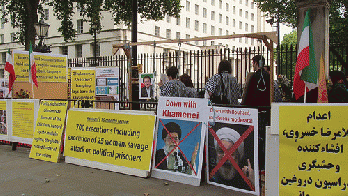[First published by Eurasia Review]
Shahid Beshesti University (SBU), Tehran, January 14, 2018. On several occasions, meeting with brilliant, tech-savvy Iranian university students who are thoroughly charming, fearless and outspoken, this observer is presented a very different picture of what Iranians are facing than what is being offered by some pro-regimen internet bloggers and water carriers.
It is from Iranian students, among others that this observer has learned during recent scintillating conversations about current events in Iran as well student's radiant optimism about Iran's future if what they call the current "theocratic dictatorship" is removed.
More than 1,000 students, most of whom attend Tehran or Beshesti Universities are among approximately 4,000 Iranian civilians who have been arrested, more than 200 in "preventive detention." This, according to reports from the Iranian Students' News Agency which quoted Mahmoud Sadeghi, a reformist member of parliament as complaining that "many of those arrested were not even involved in protests." One Iranian woman, speaking from Europe, told Fox News by phone on 1/9/2017 that her family member -- 31-year-old Alireza Gomar -- suffered a "bullet in the heart" while demonstrating outside an office for the Iranian Revolutionary Guard Corps (IRGC) in Tuyserkan, Hamadan Province, on 12/31/2017. The relative said he was rushed to the hospital by fellow activists but later died and that members of the Iranian Revolutionary Guards took his body -- and others who had been wounded -- directly from the hospital. "Our family had to beg to get the body back. The Guards wanted them first to agree to be silent, to not tell the media what had happened," the relative claimed. "Only after five days did they get his body back as the family kept up the pressure, but there were IRGC surrounding the funeral."
Unlike the widespread 2009 election fraud protests, which left at least 30 citizens dead and hundreds jailed with some politicians still under house arrest eight years later, the current protests are not only about various specific economic grievances but rather they constitute an historic challenge to the very presumption of an Islamic republic.
Also unlike 2009, Iranians today have a powerful weapon in social/mass media communication, which, while being franticly targeted by the regime, will survive and it will grow. It's true that seemingly panicked hard-liner Iranian clerics have recently been calling for Iran to create its own indigenous social media apps, blaming current social apps for the uprising. Ayatollah Ahmad Khatami preached this during last week's Friday prayers in Tehran. He insisted that when the regime blocked social media "the riots stopped." Khatami insists that "the nation does not support a social network because its key is in the hand of the United States and that anyone who burned Iran's flag should be sentenced to death." This view is agreed to, but qualified slightly, by the Ali Khomeini who blames the usual suspects, the USA, Israel and Saudi Arabia. The regime has blocked much social media but without significant intimidation of protesters.
Regime officials last week also announced that teaching English in Iran opened the way to a western "cultural invasion" and the regime has now banned the teaching of English in primary schools, a senior education official has announced. "Teaching English in government and non-government schools is against laws and regulations," Mehdi Navid-Adham, head of the regimes high education council, told state television. Ayatollah Ali Khamenei voiced outrage over the "teaching of the English language spreading to nursery schools, insisting that "this is the promotion of a foreign culture in the country and among children, young adults and youths." A video of the announcement of the ban has become a joke in Iran and is being widely circulated by students and others on social media with Iranians calling it "the filtering of English" while sarcastically comparing it to the recent blocking of the popular apps Telegram, and Instantgram by the government.
The formidable impediments regime internal security forces are currently targeting protestors with, according to students at Tehran and Beshesti Universities, and other Iranians, as well as research by Iran scholar Saeid Golkar include some of the following:
The main security, military, and judicial branches of Iran's coercive apparatus are the police (NAJA), the Basij, and the Islamic Revolutionary Guard Corps (IRGC). All are under the control of Ali Khamenei.
The NAJA (police) national police commandership oversees all of Iran's 31 provinces, each of which controls all police stations in a specific province. Each city within a province has one disciplinary area (nahieh-e entezami) that administers all police stations. Normally, according to a Professor at Tehran University, every Iranian police station has deputies of prevention, of intelligence, of inspections, of operations, as well as a judiciary police official. There are approximately 200,000 police with 100,000 additional support staff. Roughly 40% of the latter work for various surveillance organizations that closely monitor more than 4,600 neighborhoods.
In addition to the police, Iran's notorious Basij target students and other protestors regardless of the subject, should they criticize the regime. Iran's Basij is the largest civil militia organization in the world, including China and Russia's. It has approximately six million members working from twenty-four branches with four rankings, regular, active, cadre, and special. The Basij also operate a network consisting of Basij bases, districts, and regions. The Basij bases operate in more than 50,000 locations throughout Iran and students claim not much ever happens, on or off campus, without them keeping close tabs. Each Basij district operates ten to fifteen bases and is home to around 45 sundry, opaque local security and military forces. These districts are controlled by IRGC regional branches.
The Basij also operate security and military units, including the Imam Ali Security Battalions, which are trained in special tactics such as the use of customized bespoke weapons and motorcycles to suppress unrest. Some active Basij members are organized into rapid-reaction battalions called the Beit al-Muqaddas, with responsibility for defending vital installations in their neighborhoods.
In addition, the IRGC operates approximately a dozen regional headquarters with each commanding a handful of provincial corps specializing in neutralizing opposition to the regime such as protests and insurgency. All members of the IRGC Ground Forces and Basij report to their local IRGC provincial corps and focus on quelling internal disorder. The IRGC-IO also has its Basij intelligence staff (stead-e khaberi-e Basij), whose members operates in Iran's estimated 4,000 Basij districts. Much like the Herasat noted below, the Basij intelligence officers act as the regime's eyes and ears by monitoring citizen activities and keeping files on local activists.
(Note: You can view every article as one long page if you sign up as an Advocate Member, or higher).






